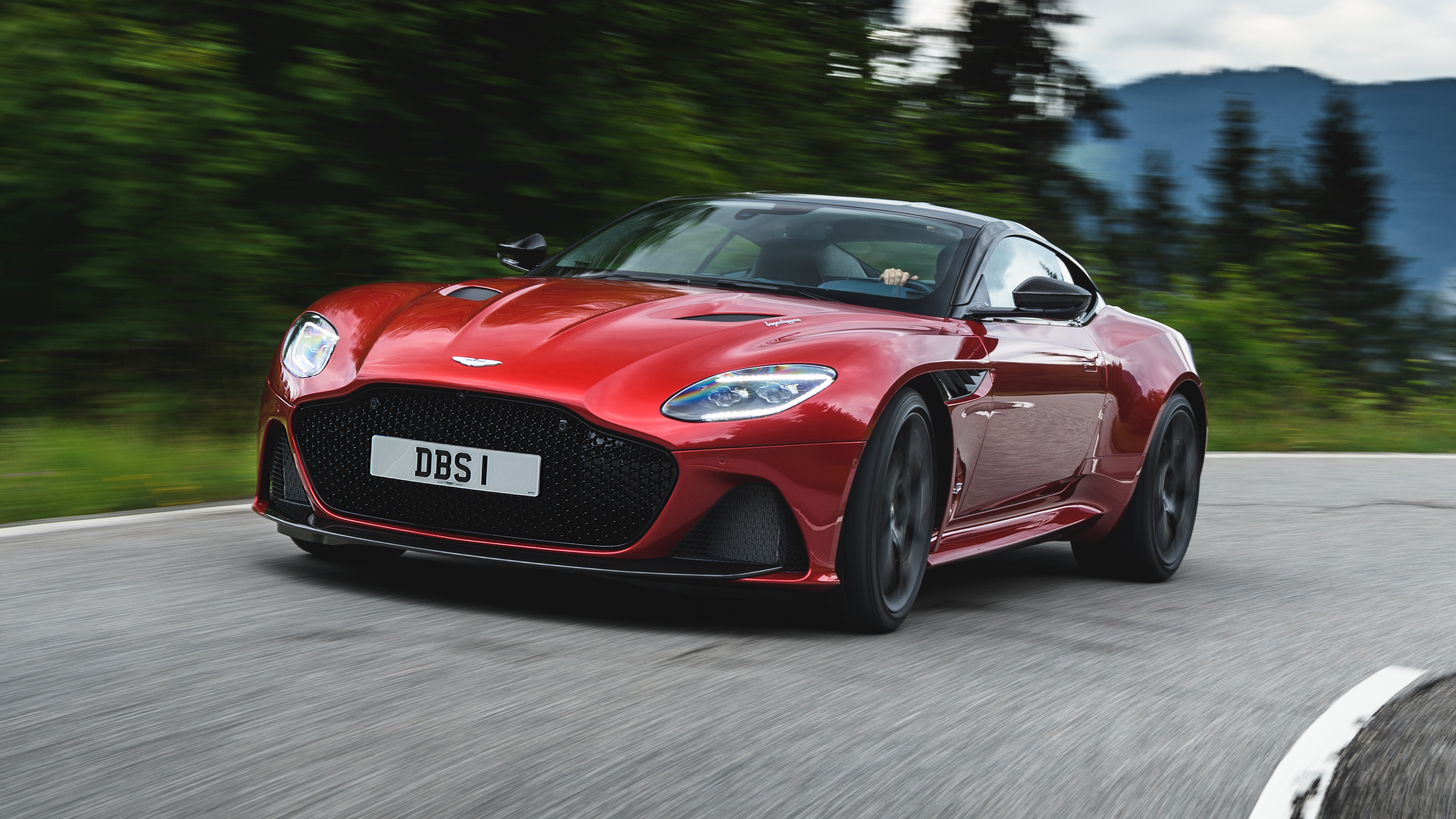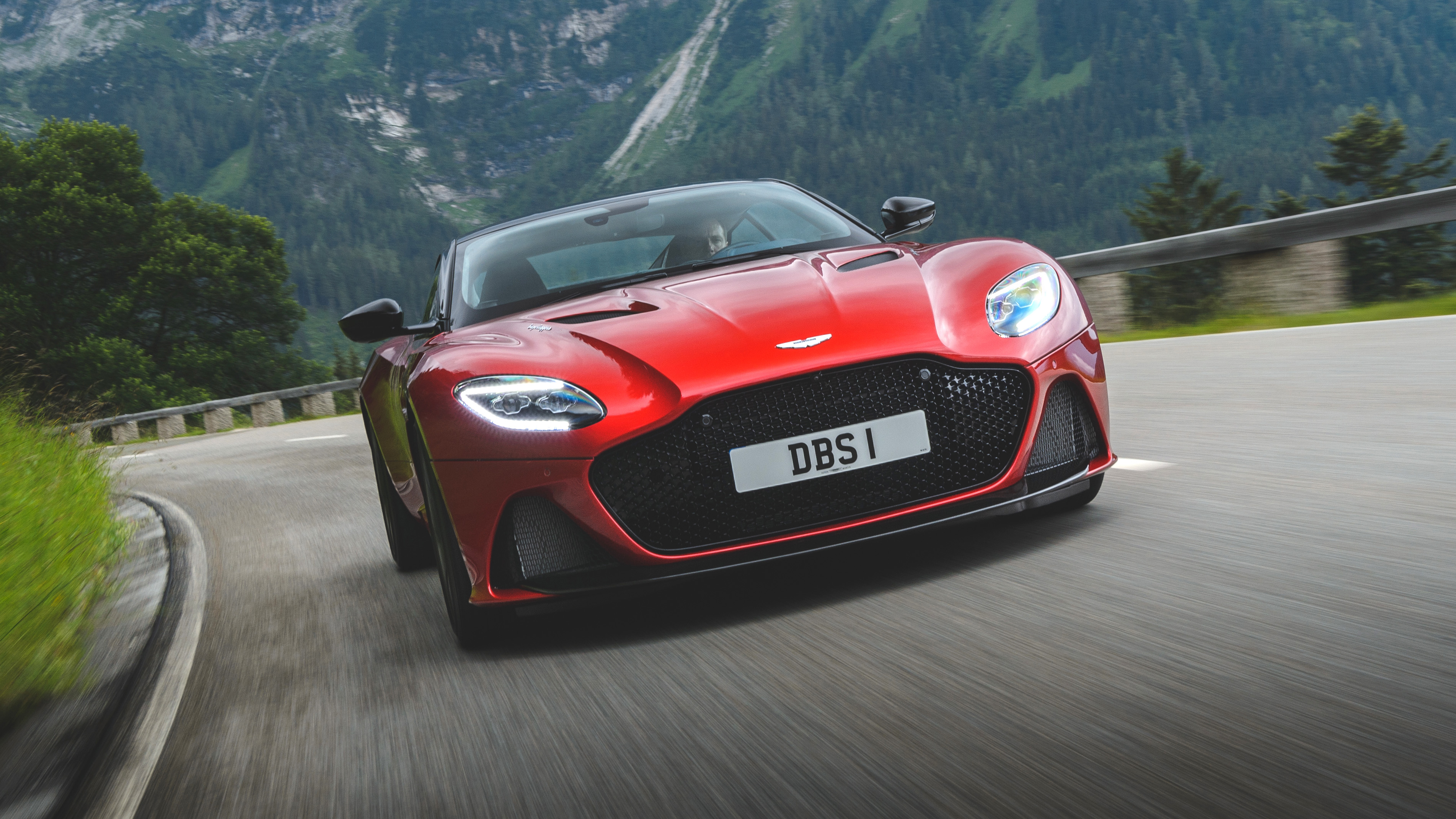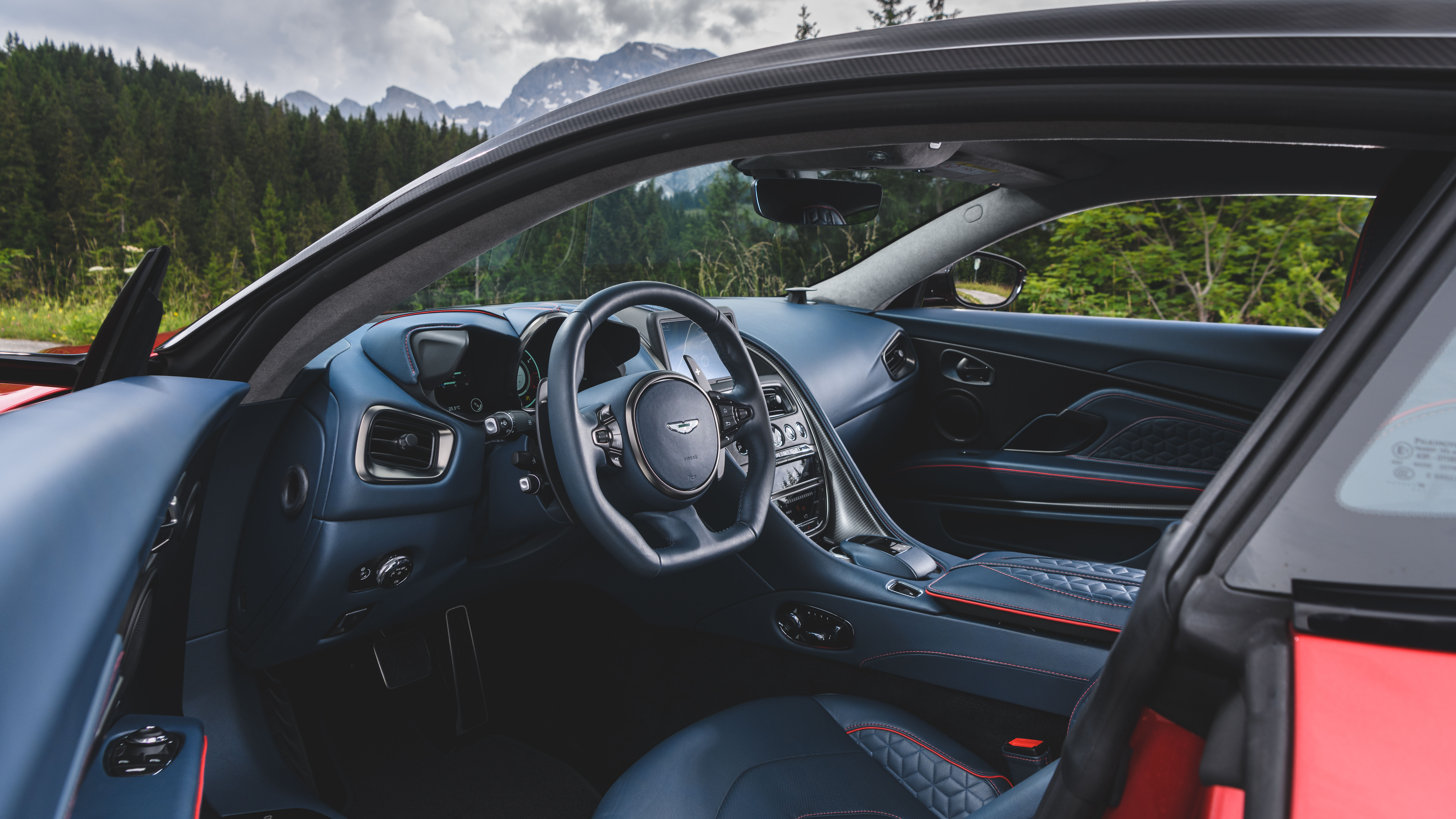
Aston Martin DBS Superleggera review
Driving
What is it like to drive?
This is a mighty car. Not explosive, not urgent, but mighty. Fourth and fifth gear sweepers are where it’s at. Why? Because at those speeds in those gears you can actually use the torque, allow the thrust to jet you out onto the next straight. As party tricks go, this deep and unrelenting push feels marvellous, so effortless and accessible and secure and sonorous that it’s a luxury all by itself.
This character defines the DBS Superleggera. Only in terms of layout and price is this a rival to a Ferrari 812 Superfast (English car with an Italian name, Italian car with an English name – weird, huh?). The 812 is a savage in comparison, the engine a masterpiece, the car ultra-active and hectic, the drive a constant bombardment.
Consuming a continent? You’d have the Aston every time. It may have the shorter final drive from the Vantage (2.9:1 instead of 2.7), but this is still a long-legged machine, pulling just 2,000rpm at 70mph in eighth. At that speed the engine is a sophisticated purr of noise, wind no more than a ruffle, the ride so impressively damped you don’t notice the work it’s doing. It stays level and calm, but not soft – it has none of the vertical float and slack that used to blight the DB11.
It’s this composure in pretty much every condition that characterises the DBS. It manages to rise above the hurly-burly. Like the DB11, it’s not an easy car to position around town: the bonnet is long and visibility harmed by the confluence of A-pillar and mirror. But it’s manners are polished, it responds well to throttle and brake, oils itself through the gears, all the while accompanied by this purring engine and authoritative suspension. Even here it moves more athletically than the DB11.
It shares the same double wishbone front and multi-link rear set-up, but rides 5mm lower, uses larger 21-inch wheels and features bespoke geometry settings. Camber has been increased front and rear to sharpen cornering and the bushes are firmer, too. In common with the Vantage and DB11, engine and chassis tune can be selected by buttons on the steering wheel, cycling through GT, Sport and Sport Plus modes.
On the sort of roads you’d enjoy driving the DBS on, Sport works nicely. I suspect in the UK you might want to back the suspension off to Comfort, but on the smoother roads of Germany and Austria the tighter control of Sport wasn't exact a penalty. And it felt good here. The steering is weighty (there are two maps, one for Comfort, one for Sport/Sport Plus), but it’s accurate with a rack that’s quick enough to ensure you rarely need to move your grip, but never makes the front end feel darty or snatchy. Partly because of the weight you’re working against when you apply any lock.
The whole car is well judged. It moves as a piece, behaves cleanly, and is deeply satisfying. It’s only on the exit of slow corners that you need to watch the torque, moderate the throttle, that you want to go diving into the menus to slacken the traction control. There is still, under duress, a tiny proportion of the squirm early DB11s suffered.
But that’s fair enough when you have 663lb ft trying to find its way to the tarmac. And that thrust is easily managed. Partly because the traction control activates more smoothly now, partly because the torque isn’t quite as hard-hitting as the figures suggest. It’s not until the rev needles swings past 2,500rpm that you feel the full effects, but at that point you do need to start concentrating, because the rate the DBS hurls itself forward is a lot more startling than the DB11.
The engine is never - even up towards 7,000rpm - stressed. It just does what it does with calmness and dedication. The 50mph leap from 50-100mph in fourth gear is dispatched in 4.2secs. It’s a deeply fast car. Supercar fast, but with gentler manners. And it sounds lovely. 10db louder than the DB11, Aston claims, but still not obnoxious, and the overrun pops and burble in Sport and Sport Plus have been well judged.
The front end, wearing tyres 10mm wider than the DB11 and a thicker anti-roll bar, is keen and precise without being aggressive, while the 51:49 weight distribution (the gearbox is a rear transaxle), helps keep the DBS nicely balanced throughout a corner. As I said earlier, the car just moves well. If one component felt slightly out of tune, it was the brakes – although they’re due a pad upgrade before deliveries start around September.
Featured

Trending this week
- Car Review
BMW iX3






